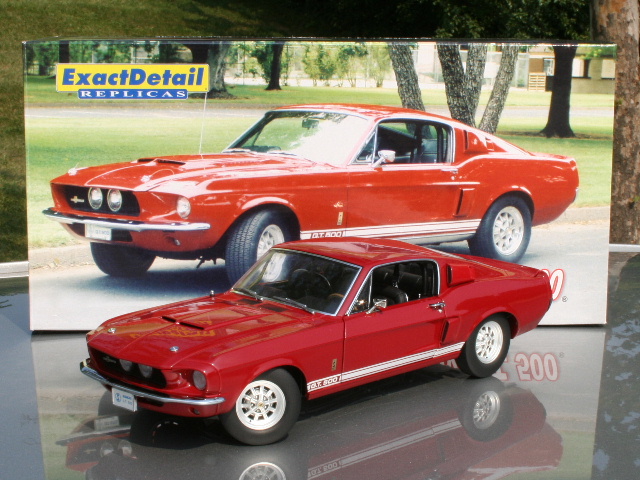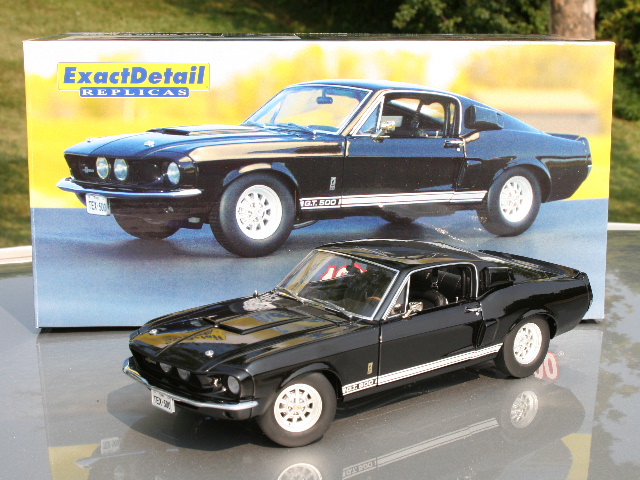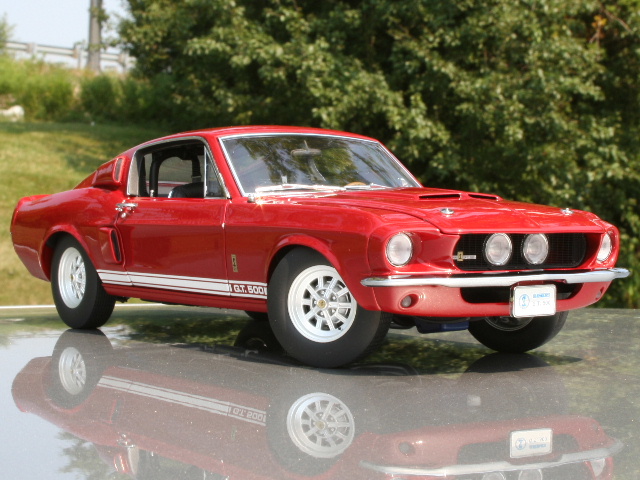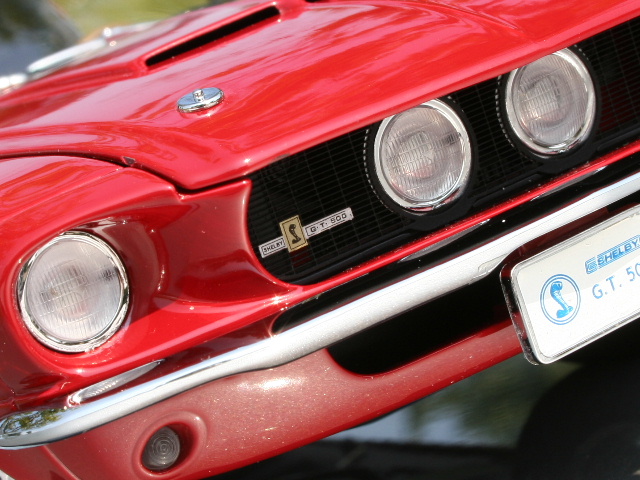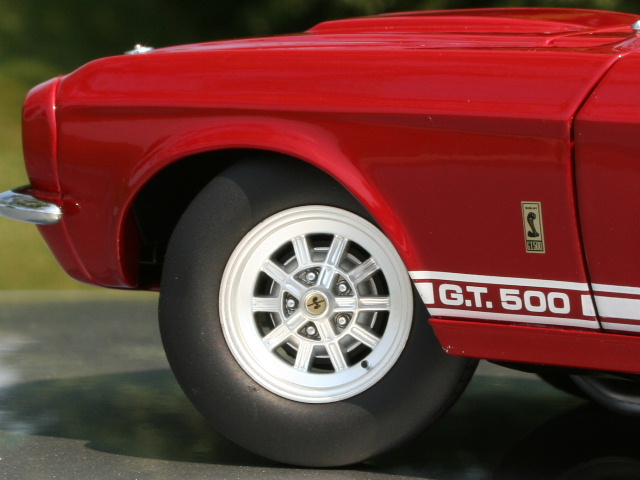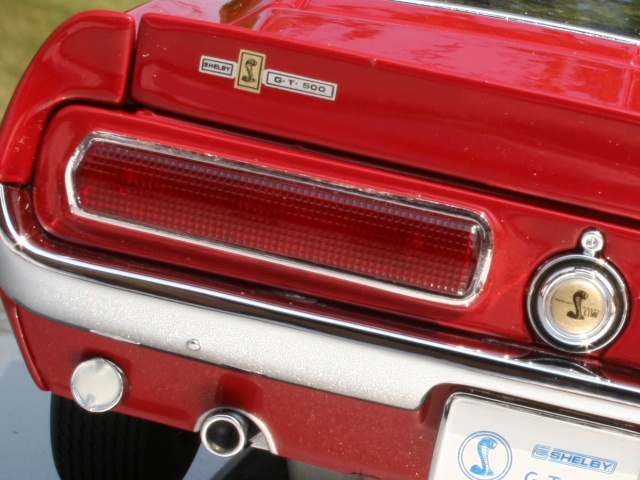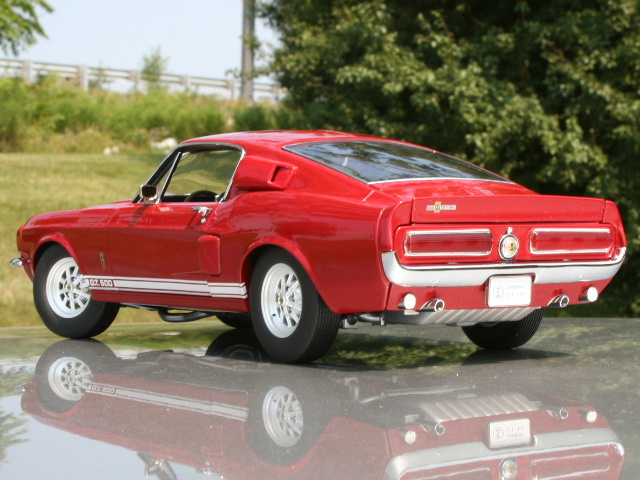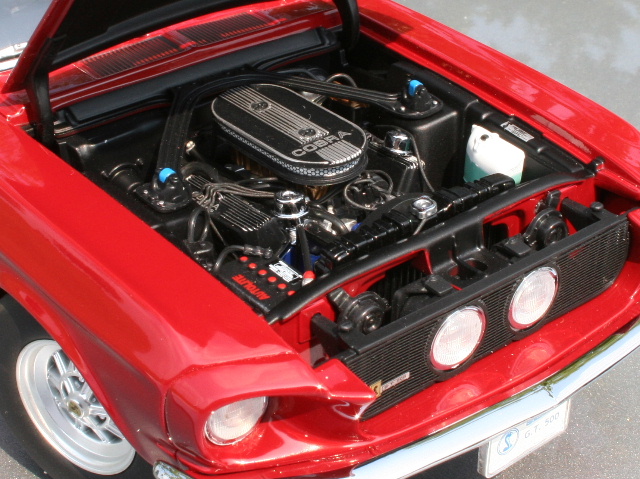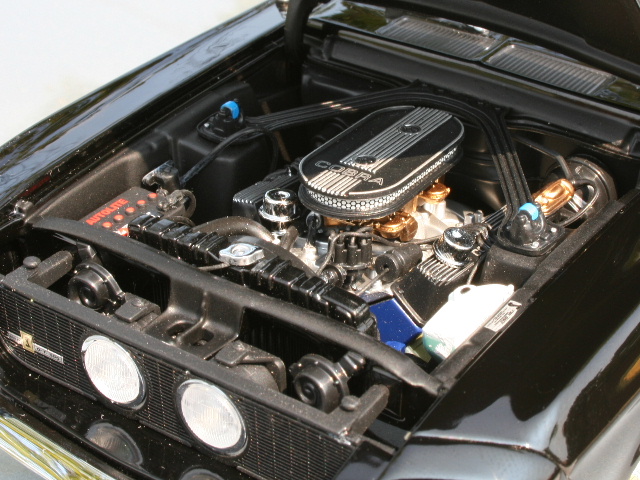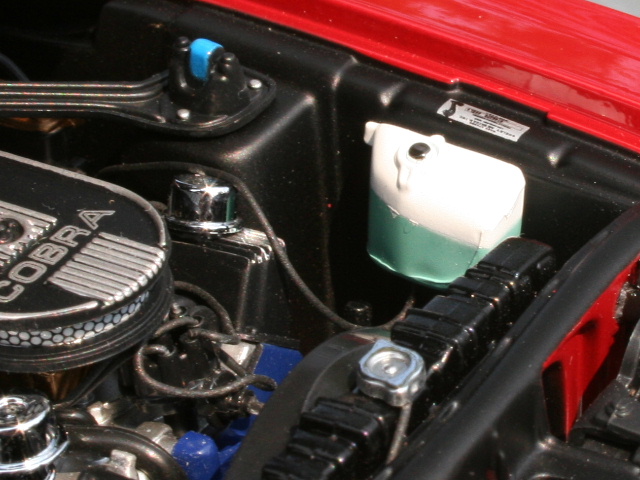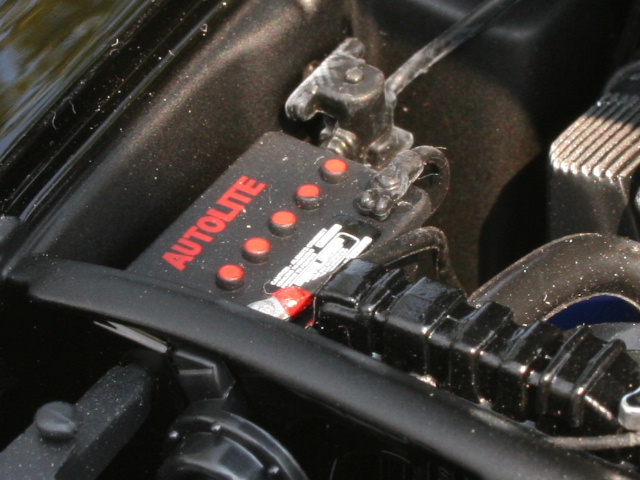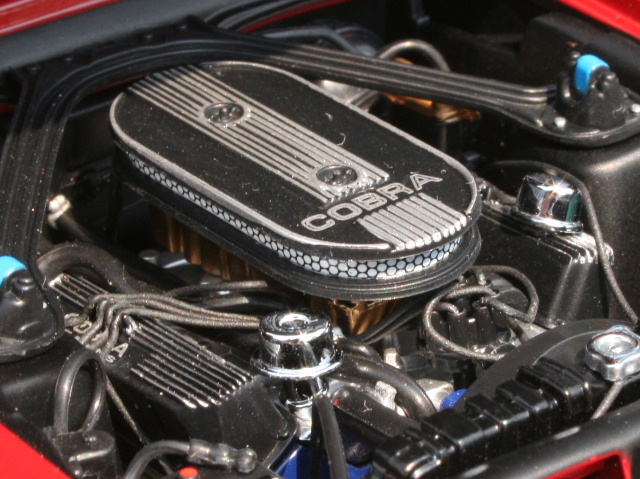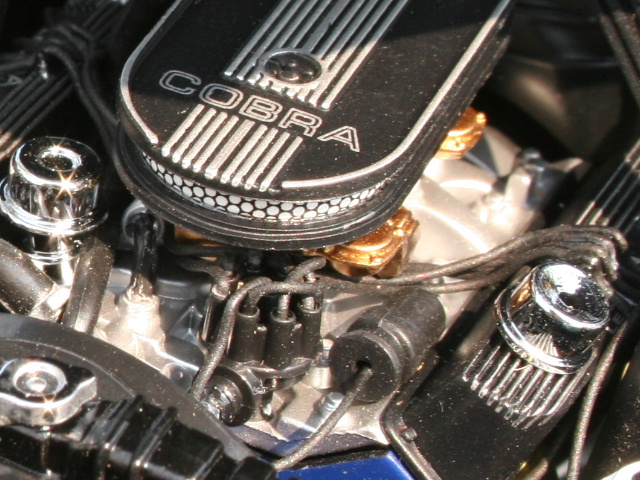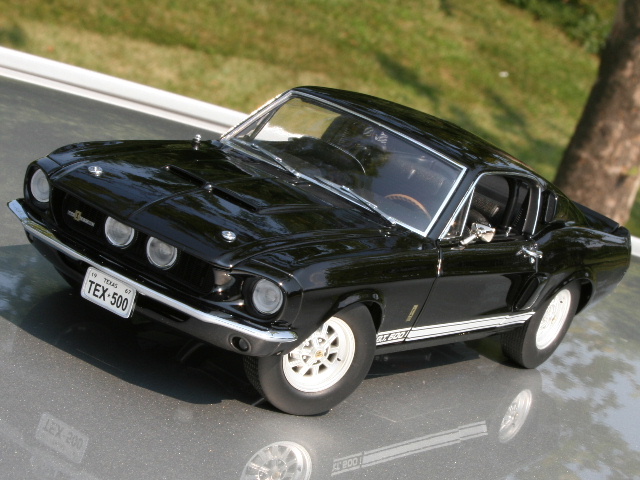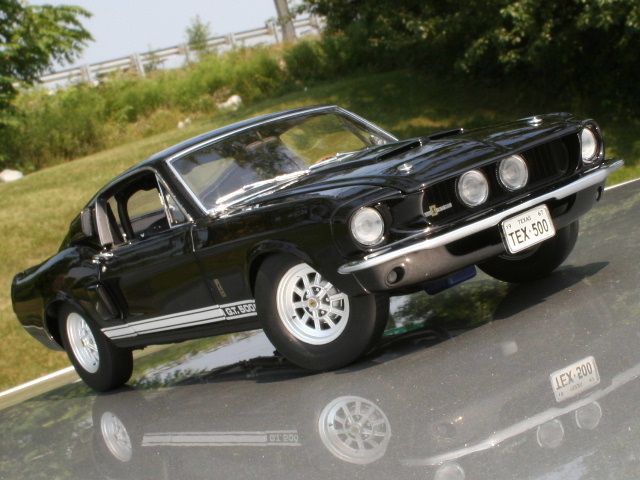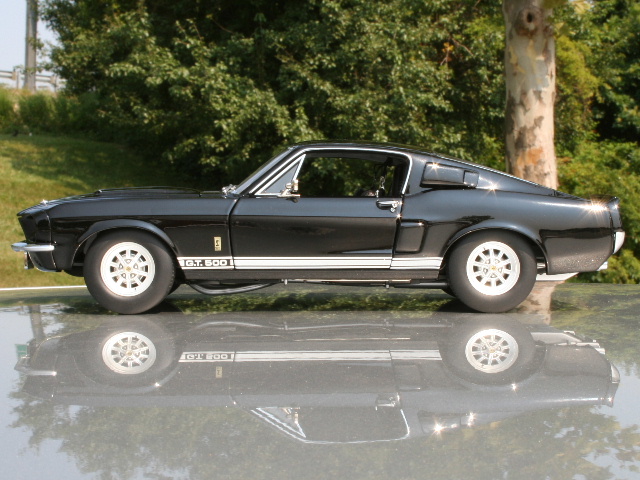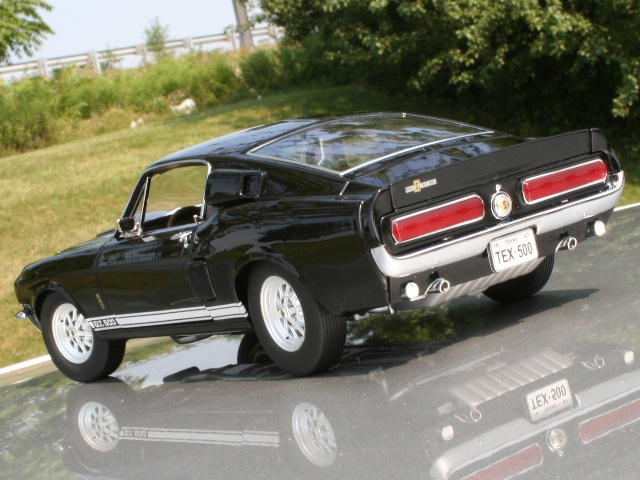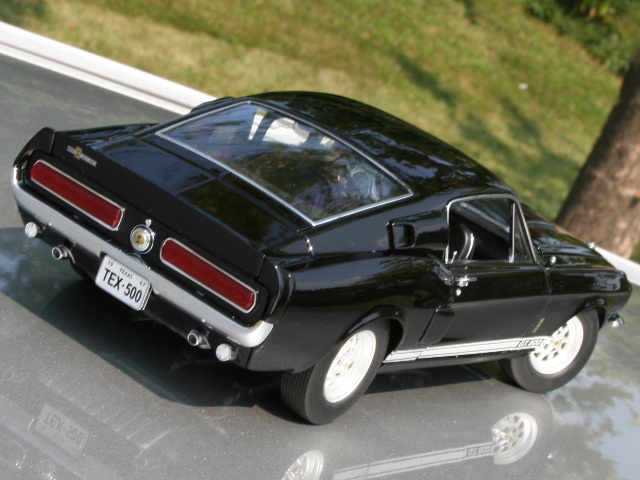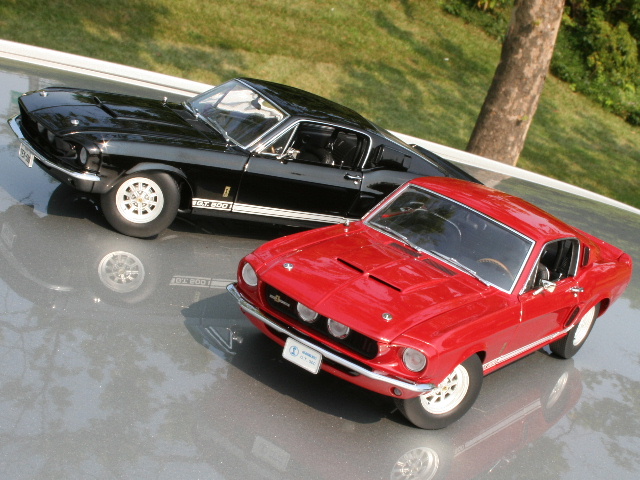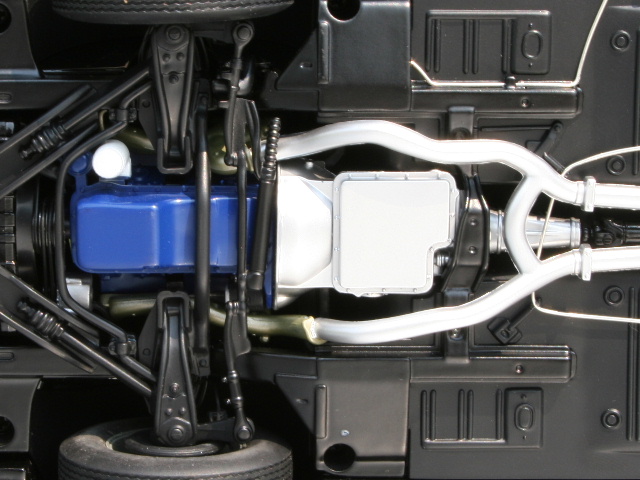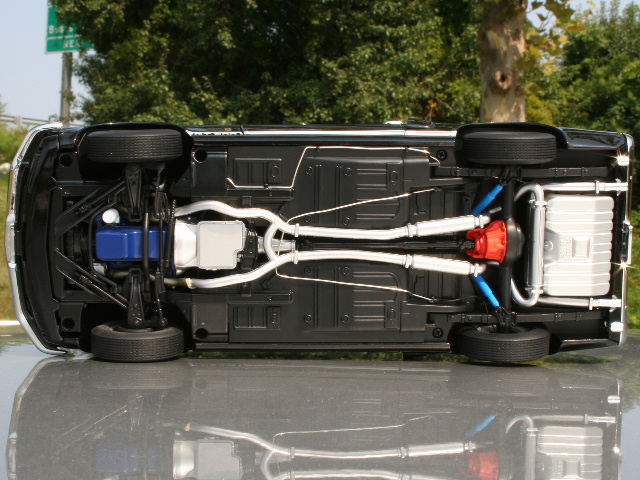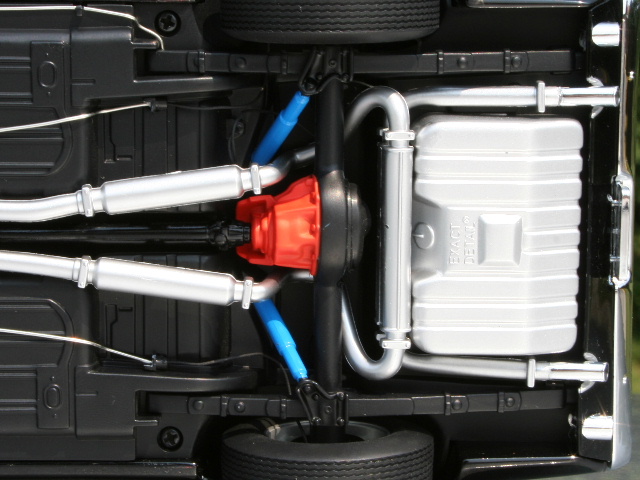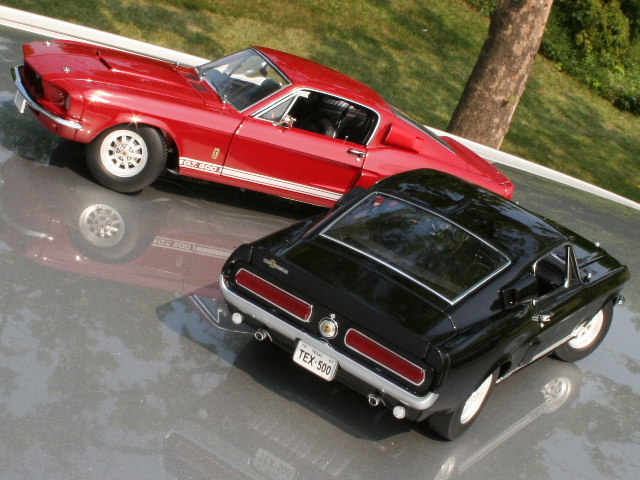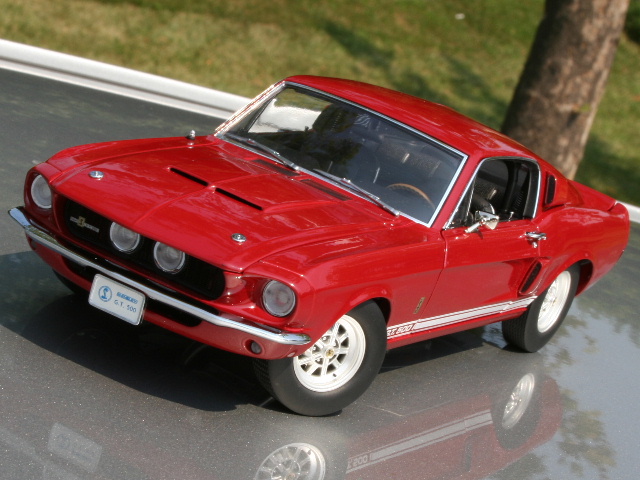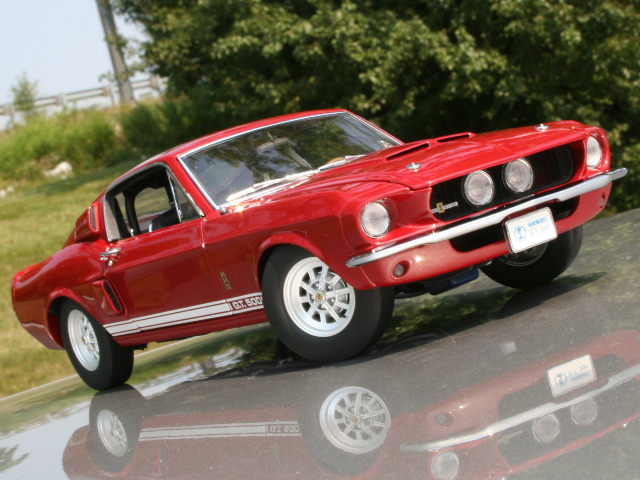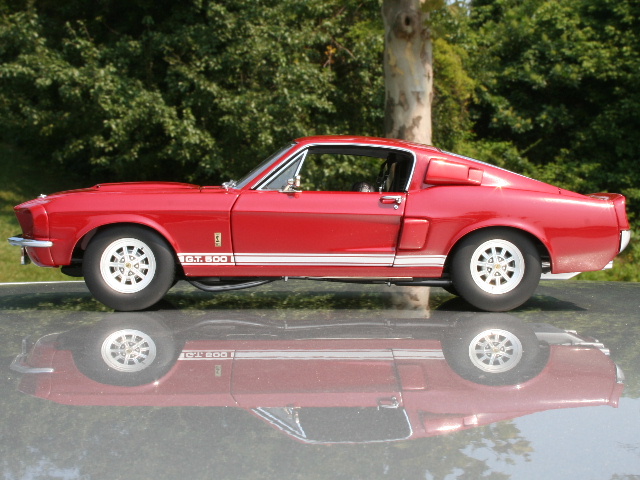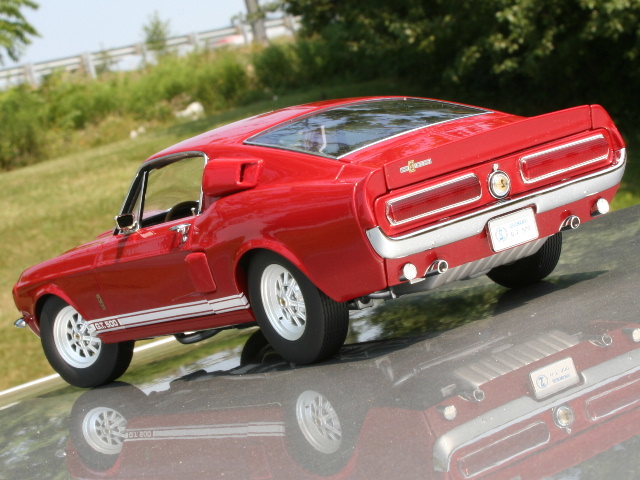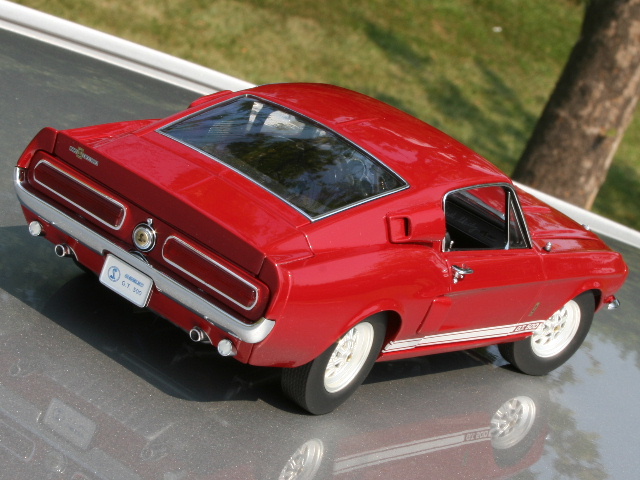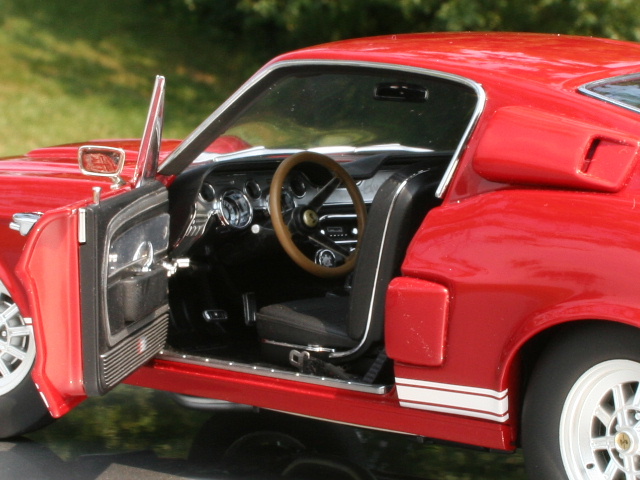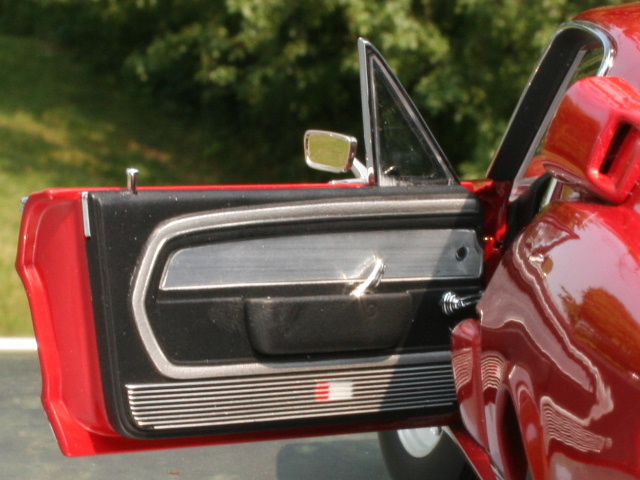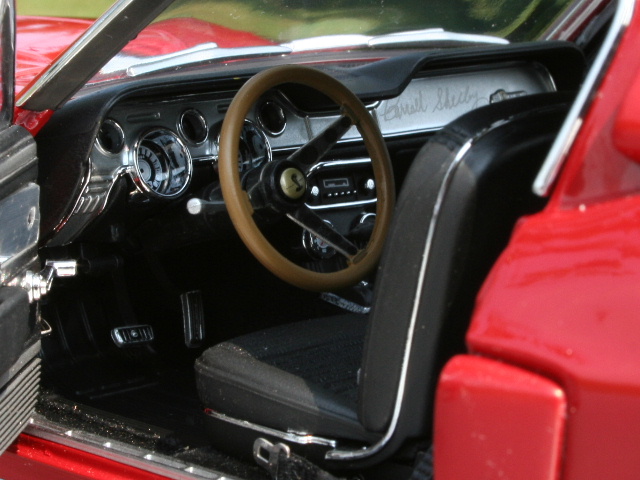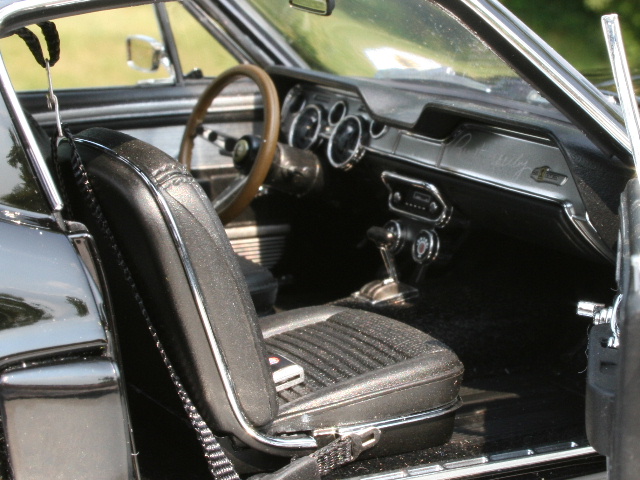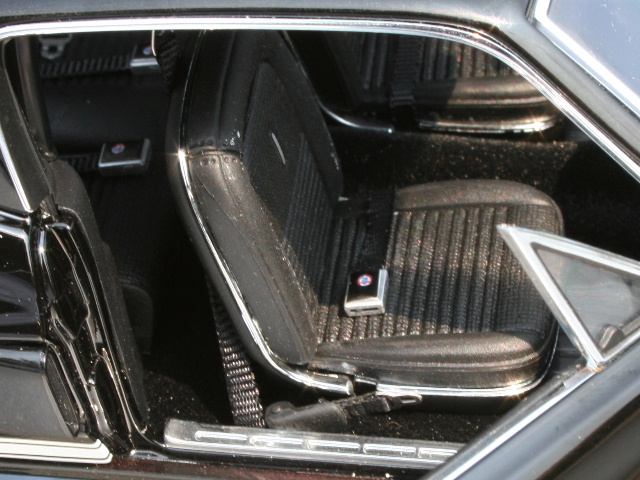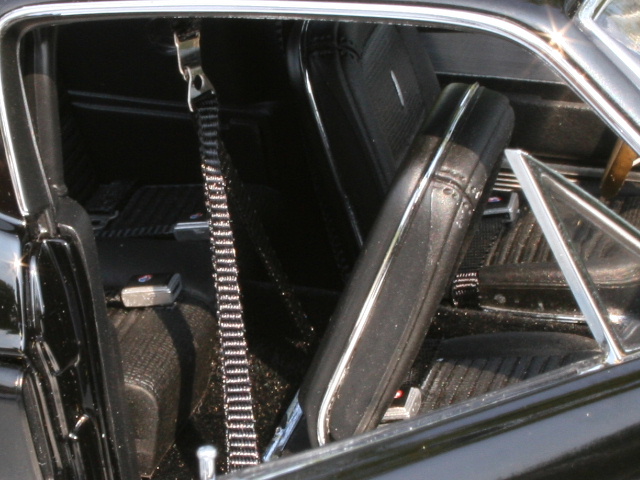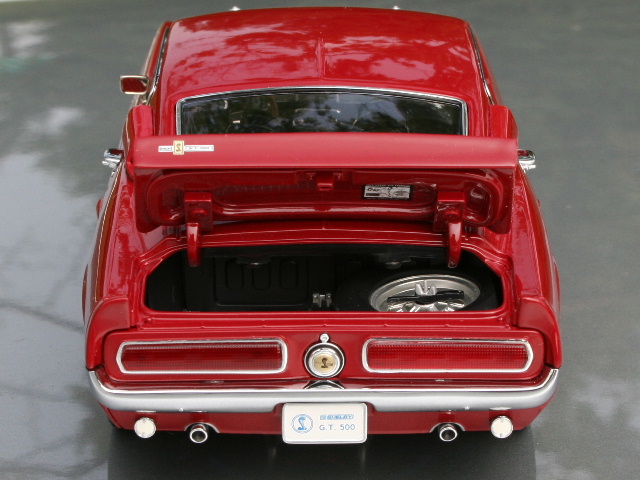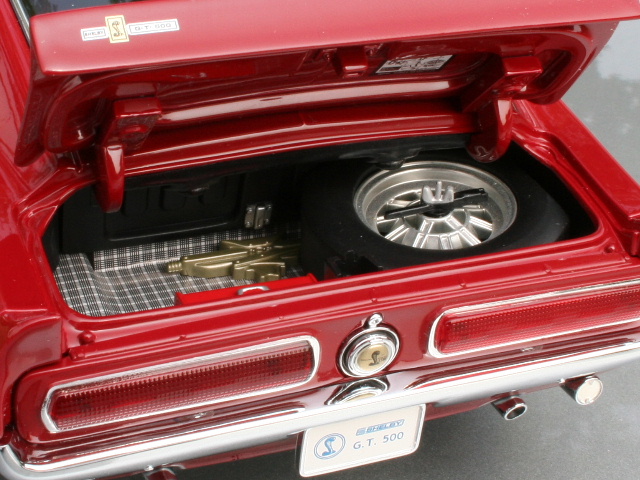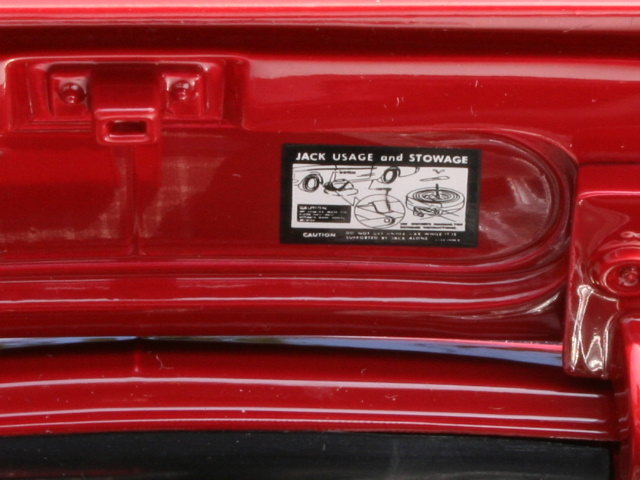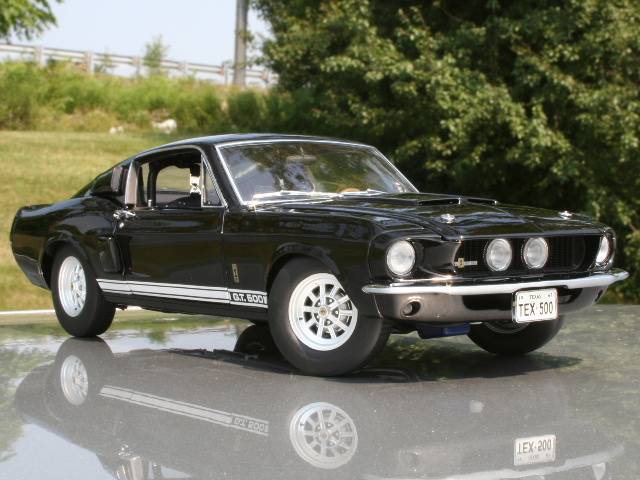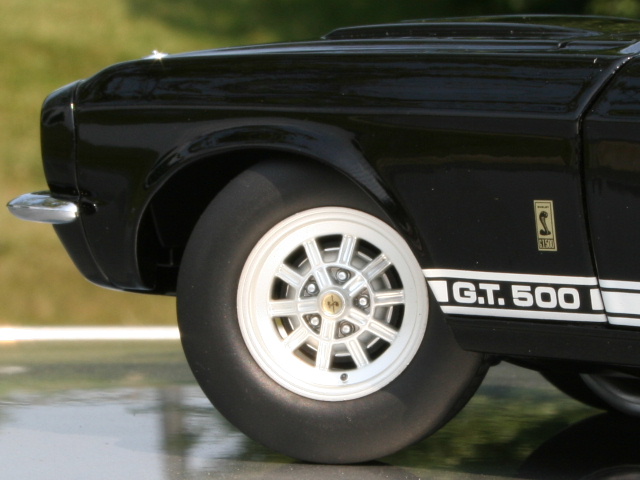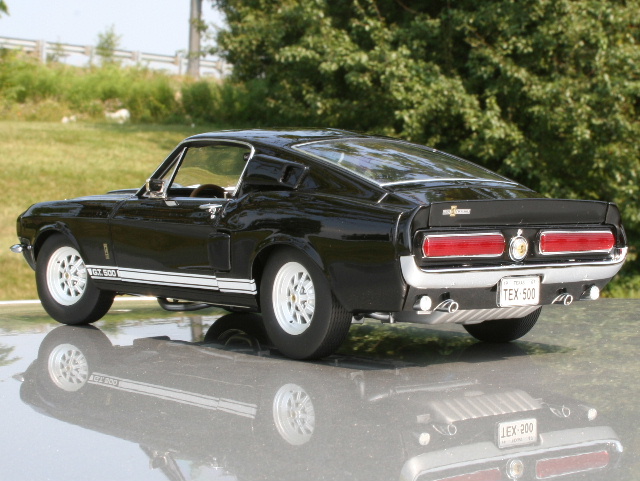History
Introduced in the fall of 1966, the 67 Shelby GT500 was born with a pedigree unlike any other car in its class, combining the best performance traits of Shelby
’s earlier race bred GT350’s with luxurious features typically reserved for more upscale boulevard cruisers. After selling fewer than 600 GT350 models in 1965 and almost four times that amount in ‘66, Shelby quickly recognized what his clientele were looking for in their professionally modified pony cars. They wanted distinctive styling, more comfort, and bigger motors. And with the 1967 GT500, that’s just what they got.
Assembled at the Shelby American Plant in Los Angeles
, the GT500 was produced with several custom fiberglass panels, including a longer hood that featured a wide functional scoop. An all new nose piece, also constructed of fiberglass, comprised of front fender extensions and deeper headlight housings with a wider grille opening that incorporated a pair of 7-inch driving lamps side by side in the center. After several states made this illegal, they were moved to the outboard areas of the grille.
Other characteristic styling elements included special badges and a racing-inspired pop-open gas cap fixed to the rear taillight panel along with a pair of upper & lower side scoops, the latter of which became purely decorative early in production due to increased manufacturing costs. Further decoration came in the choice of wheels. In addition to the standard steel wheels, which came with 5-spoke style covers, Shelby offered two attractive wheel options - the stylish Kelsey Hayes MagStars or the rugged 10-spoke aluminum wheels that arrived later in the year, both of which came wrapped in E70x15 tires.
Inside, the 67 Shelby had little in common with the rigid, no-frills interior of the earlier GT-350. Available in black or parchment, the GT500’s comfortably appointed interior featured fold-down rear seats as well as a 140-mph speedometer and an optional 8000-rpm tachometer which were positioned within a brushed aluminum dash panel. On top of the built-in details, Shelby added his own signature touches, including a wood-rimmed steering wheel, oil pressure and ammeter gauges, and a functional roll bar with integrated shoulder harnesses that were mounted to a pair of inertia reels modeled after those used on F-4 fighter jets. It marked the first time this type of equipment had been used on a production car.
Mechanically, the 67 Shelby
suspension was mildly tailored with a thicker front anti-sway bar and stiffer, progressive-rate springs that were unique to the GT500. Power steering and power brakes were mandatory options. The real highlight of the GT500 was the introduction of the 428-ci big block “Police Interceptor”, which was equipped with an aluminum intake manifold that mounted a pair of 600-cfm Holley carburetors beneath a finned aluminum oval air cleaner lid. Coupled to a C6 automatic or 4-speed top loader manual transmission, the 67 GT500 was conservatively rated at 355hp with 420lb-ft of torque, capable of launching the GT500 to 60-mph in 7.2 seconds with a full quarter-mile gallop in 14.5 seconds at over 100mph.
Although the 1967 GT500 was a considerable departure from what Shelby envisioned in 1965, it’s what his customers wanted, who wound up buying an impressive 2,028 copies in 1967. With its attractive styling, confident driveability, and awesome power, the 1967 GT500 continues to be one of the most sought after of Shelby ’s stable of pumped up ponies.
Just as Shelby was respected within the automotive industry for building fine sports cars, the same could be said for the
Michigan
based organization known as Lane Automotive, who are renowned for building some truly extraordinary 1/18-scale diecast replicas under the Exact Detail brand name. Among their lineup is an impressive series of highly detailed Shelby ’s, including two new 1967 GT-500 models. Finished in your choice of Candy Apple Red or Raven Black, both Shelby’s have been assembled with a remarkable level of fit and finish that ranks with some the choicest replicas in the diecast model car industry.
Exterior
Brilliant touches of chrome and genuinely reproduced emblems are just a couple of the highlights that will immediately catch your eye upon removing these miniature works of art from their styrofoam clamshells. The overall look of these Shelby models has been successfully captured and distinguishing characteristics such as the scooped hood and GT-40 style side scoops are in place. Positioned between the Cougar style taillights is an accurately molded gas cap which features an authentic coiled snake emblem. Additional elements like the T3 triangles etched in the front headlights and center mounted high beam lamps are further proof of the attention to detail that went into these two GT500 models. Rounding out the list of exterior equipment is a set of skillfully crafted 10-spoke aluminum wheels which are wrapped in ordinary blackwall rubber. I would have preferred the accurate white Goodyear lettering, but the undressed tires actually provide a cleaner look.
Engine
Beneath the wide scoop in the GT500’s extended hood is an amazingly reproduced rendition of the 428-ci Police Interceptor big block, complete with an aluminum intake, a pair of Holley carburetors, and a finned oval shaped air cleaner lid with matching valve covers. Fully wired and plumbed, the GT500’s mother of a mill is tightly sandwiched between the Shelby
shock towers which are connected by means of a detailed export brace. Filling the remainder of the engine bay is a painted windshield washer fluid reservoir, a wired master cylinder, and a genuine Autolite battery which is detailed with an instruction label as well as a pair of cables, one of which is routed to a starter relay mounted to the inner fender wall. The only thing missing is a set of realistic hood hinges. Although doglegs aren’t a deal breaker for me, scissor style spring loaded hinges are pretty common by today’s standards and I’d like to see Lane incorporate them on future projects.
Interior
The good news is the doors on both GT500 models open on real aspect hinges. Inside, the 67 Shelby model's fully carpeted cabin features a bonanza of eye candy. Brushed aluminum panels are set in the detailed door skins as well as the dual-cove dash, surrounding a sparkling instrument cluster that includes precisely replicated speedo and tach gauges. A GT500 emblem and accurately reproduced Carroll Shelby signature adorn the passenger side of the dash with another snake emblem properly poised on the horn button of the 3-spoke wood-rimmed steering wheel. Framed in thin strips of chrome, the folding bucket seats feature woven lap belts with chrome plated hardware. Behind the seats, a roll bar serves as the fixture for the woven shoulder harnesses which are linked to miniature inertia reels. Chrome door sill plates, painted foot pedal trim, and oil pressure and ammeter gauges mounted beneath the dash are just a few more examples of the additional bits of detail that will keep your eyes from going hungry.
Trunk and Undercarriage
Behind the well appointed interior is the Shelby ’s limited trunk space that is anything but limited on detail. Neatly tucked inside the opening trunk is an accurately patterned mat along with several other treasures, such as a nifty little red toolbox, a miniature jack stand, and a full-size 10-spoke spare that barely fits in the tight confines. A splash of silver highlights the latch molded into the backside of the rear seat and a legible “Jack Usage and Stowage” label is attached to the underside of the trunk lid. Speaking of undersides, the belly of this beast is hiding a few details of its own, including a steel fuel line and emergency brake cables as well as a rotating driveshaft that spins in unison with the rear wheels. Additional splashes of paint give life to the oil pan and filter as well as the rear differential and shocks while the GT500 auto transmission, exhaust, and transverse muffler have been painted with a realistic metal finish.
The Bottom Line
The 1967 Shelby GT500 is arguably one of the more popular muscle cars in today’s automotive culture, thanks in part to the 67 Shelby that was featured in Jerry Bruckheimer’s big screen production of Gone in 60 Seconds. As such, it should come as no surprise that there are several replicas of the 67 Shelby available in various scales at different prices. So why should you contemplate paying top dollar for either the Candy Apple Red or Raven Black 1/18 scale Exact Detail versions? Simply put, the Exact Detail GT500 models have been assembled with an exceptional level of detail and finesse unlike any other comparable diecast replica. That’s not to say they’re perfect, but then you have to ask yourself, what model is? At least with the Exact Detail Shelby models the positives far outweigh any negatives. Bottom line - with only 1250 copies produced of each color, if you can afford the price of admission, then this first class show is one that you don’t want to miss.




